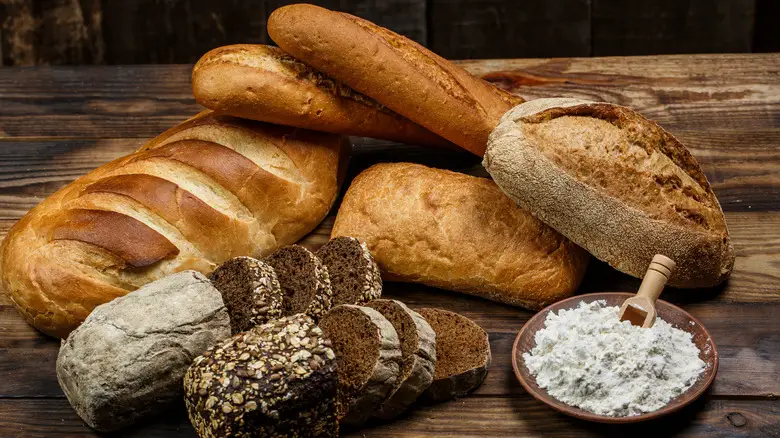Is it Okay to Cook Different Meats Together?
Cooking multiple meats together can be a time and cost-effective solution. However, the question of whether it’s safe or not remains a mystery for many. This article will explore the safety concerns, cooking techniques, flavor combinations, and alternatives available when you choose to cook different meats together.
The Safety Concerns of Mixing Different Types of Meat
Foodborne illnesses are a major concern when cooking meat dishes. Cross-contamination occurs when bacteria from raw meat spreads to cooked meat or other foods. The danger here is that bacteria such as Salmonella and E. coli can cause serious illness.
When cooking different types of meat together, cross-contamination is a significant risk. Each type of meat has its specific bacteria, and combining them opens the door for contamination, especially if one of the meats is undercooked.
Additionally, cooking different types of meat together makes it difficult to adhere to safe internal temperatures. Some meats require higher internal temperatures than others to ensure they are safe for consumption. Therefore, combining two meats with different temperatures increases the risk of raw or undercooked meat in your dish.
Understanding the Differences in Cooking Times and Temperatures for Different Types of Meat
Cooking temperature is critical in ensuring your meal is safe for consumption. Different types of meat take varying amounts of time to cook at different temperatures. Before cooking mixed meats, you’ll need to familiarize yourself with their unique requirements.
For example:
- Pork – cook between 145°F (medium-rare) to 165°F (well-done).
- Chicken – cook between 165°F-175°F (well-done) to minimize salmonella and other harmful bacteria.
- Beef – cook between 145°F (medium-rare) to 160°F (well-done).
Cooking at the wrong temperature can result in foodborne illness if the meat isn’t properly cooked to kill harmful bacteria.
When different meats are cooked together, it is best to cook each meat separately. This ensures that all meats are safely cooked through without the risk of cross-contamination or overcooking one meat while trying to cook another.
The Effect of Mixing Different Flavors and Textures
Combining different meat varieties can lead to variations in texture and flavor blends. Some meats tend to overpower others, making it hard to maintain a harmonious flavor blend.
Mixing textures can also pose an issue- for example, slow-cooking lamb shanks with chicken breast may result in undercooked chicken, leading to potential food poisoning.
However, when done correctly, the combination of different flavors can create a unique and delicious culinary experience.
Tips for Cooking Different Meats Together Safely
Separate cooking tools
- Use separate cutting boards, knives, utensils, plates to avoid cross-contamination
- Cleaning tips for each cookware before use
One of the simplest ways to prevent cross-contamination is using separate cooking tools. That way, you limit contact between the various meats and minimize the risk of spreading bacteria from one type of meat to another.
Ensure that all cooking materials are clean before use carefully. You’ll need hot water and soap to clean all surfaces where raw meat was stored or prepared—this includes countertops, cutting boards, utensils, and plates.
Temperature control techniques
- Tools such as thermometers and timers help determine when meat is done safely
- Recommended internal temperature levels for each meat type
Cooking with the right temperature is crucial to ensure that your meat is safe for consumption. Use a thermometer to check the temperature of the meat in various places, especially in the thickest part, without touching any bone. Check the internal temperature of each type of meat before combining them.
You can also use timers to track the cooking time for each type of meat you are preparing. When one of the meats is cooked, remove it from heat before mixing it with another kind of meat.
Creative ways to combine flavors
- How to achieve a harmonious flavor blend when cooking more than one type of meat
- Inspiring recipes that use mixed meats safely
Combining different ingredients can lead to unique and delicious results. When selecting meats to cook together, consider flavors that complement one another.
For instance, if you’re cooking chicken and beef together, consider marinating both meats in a complementary marinade to enhance the flavor blends. This will add an extra layer of flavor and mitigates against dry or tasteless dishes.
Other Alternatives: Pre-packaged Meat Mixes
A simpler way to cook mixed meats is by using pre-packaged meat mixes available in grocery stores. For example, chicken and beef pre-packaged mixes are readily available. These packages have already weighed and combined different types of meat so that you can cook them without worrying about cross-contamination or incorrect internal temperatures.
The pros of using pre-packaged meat mixes
- Convenience and time-saving:
- Cooking instruction:
You don’t have to go through the rigorous process of selecting, cleaning, marinating and weighing meats before cooking. Everything is ready to cook out of the package, saving you time.
The mixes come with instructions on the cooking temperature and time ideal for each type of meat included in the pack.
The cons of using pre-packaged meat mixes
- Limited Flavor Control:
- Possible Storage Issues:
You’re limited to the flavor blends available in the pre-packaged mix you’ve purchased. There may be limited choices to explore, so customization is minimal.
The package may contain more meat than you need. As a result, storage could be an issue especially if your freezer or fridge space is limited.
Conclusion
It’s okay to cook different types of meat together, but it requires optimal safety measures that ensure proper preparation and cooking techniques are used. Cross-contamination and overcooking are possible hazards that can be avoided when one uses separate utensils when cooking various meat varieties.
Proper preparation using recommended temperatures, tools and timer usage followed by proper sanitation are crucial. Incorporating mixed meats into your meal plan saves time and offers new recipe possibilities requiring minimum effort for exceptional flavors. Pre-packaged Mixes also offer many conveniences but limit flavor control while possibly raising storage issues.
In conclusion, a creative approach enables you to venture into new culinary possibilities while remaining safe. Pay attention to smart food safety practices when combining different meats to bring delightful flavors to your table without risking cross-contamination or illness.
Can different types of meat be cooked together without risking contamination?
Yes, it is generally safe to cook different types of meat together as long as they are cooked to their appropriate temperatures. However, it’s important to keep in mind that cross-contamination risk still exists, so be sure to handle raw meat properly and clean all surfaces and utensils.
Is there a certain way to ensure that all meats are cooked evenly when cooking them together?
To ensure that all meats are cooked evenly when cooked together, it’s best to cut them into similar sizes and thicknesses. This will ensure that they cook at the same rate. Also, make sure to use a meat thermometer to check the internal temperature of each type of meat to make sure they are fully cooked.
Can different types of meat be marinated together before cooking?
Yes, different types of meat can be marinated together before cooking. However, it’s important to use a marinade that complements each type of meat and not overwhelm any particular flavor. It’s also important to use separate containers or bags for each type of meat during marination to avoid cross-contamination.
What should be kept in mind when cooking different types of meats together?
When cooking different types of meats together, keep in mind their individual cooking times and temperatures. For example, chicken needs to be cooked at a higher temperature than beef or pork. Using a meat thermometer is essential in ensuring all meats are fully cooked and safe for consumption. Additionally, make sure cutting boards, utensils, and surfaces are thoroughly cleaned and sanitized after handling raw meat to prevent cross-contamination.






